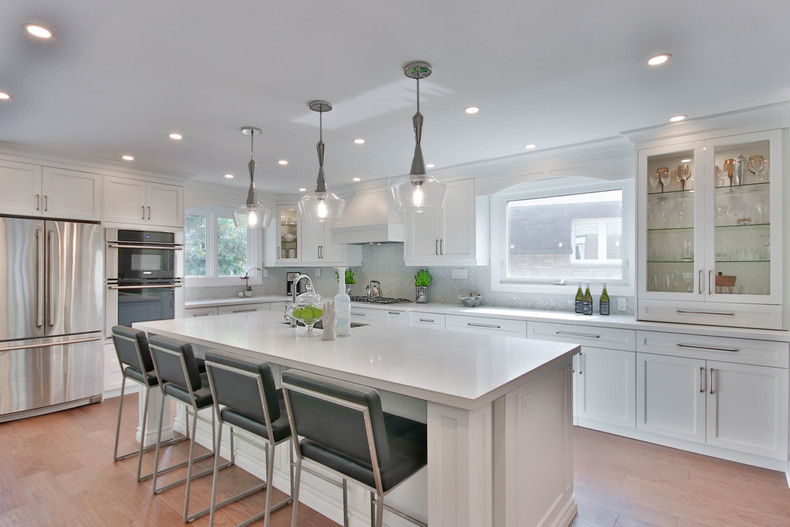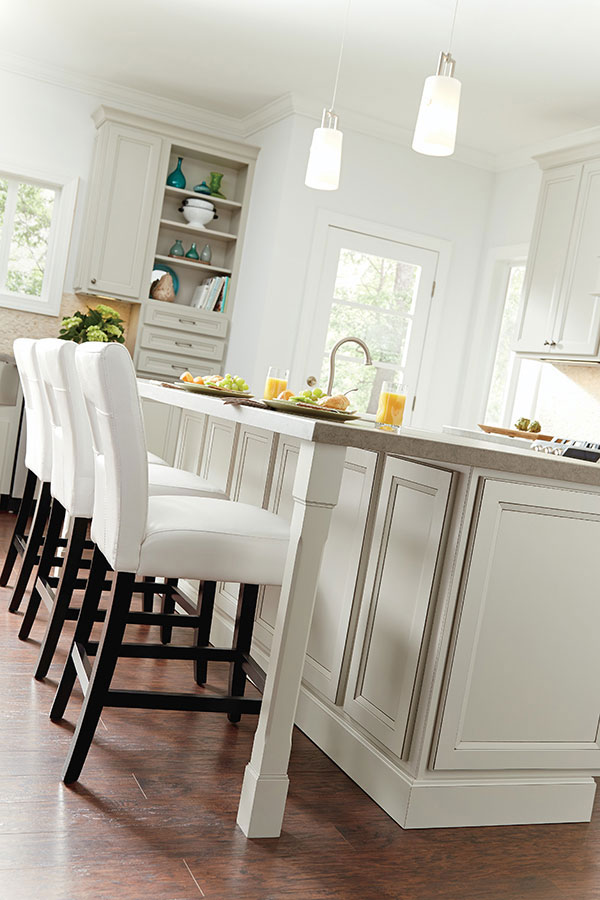Check Out Modern and Standard Designs in Legs For Kitchen Island Tasks
Check Out Modern and Standard Designs in Legs For Kitchen Island Tasks
Blog Article
Trick Considerations for Finding the Finest Legs For Kitchen Island for Your Layout
When picking the perfect legs for your kitchen island, a number of essential factors to consider come into play that can substantially affect both performance and visual appeals. The choice of product, height, and style should align with your total cooking area style to guarantee a harmonious appearance. Additionally, stability and upkeep demands are critical for lasting use and simplicity of treatment. Understanding these aspects can enhance your cooking area's practicality and visual charm, yet the nuances of each factor to consider can commonly be ignored. What effects might these options carry your cooking area's overall atmosphere?
Determine Your Design Choice
Identifying your style preference is vital when selecting the suitable legs for your kitchen area island. The legs of your cooking area island not only serve a useful objective but also contribute significantly to the overall visual of the area. Consequently, identifying your design style-- be it modern-day, rustic, typical, or commercial-- is vital.
For a modern kitchen area, think about smooth, minimalistic legs that complement open rooms and tidy lines. Standard kitchen areas commonly favor transformed or luxuriant legs, which can add a touch of elegance and class.
In addition, think about the height and proportion of the legs in connection with the island's surface. This makes sure the visual balance and performance necessary for daily usage. Analyzing the existing components in your kitchen, such as cabinetry and appliances, can also direct your decision, guaranteeing cohesiveness in layout. Eventually, your design preference will affect not just the selection of legs however also the general consistency of your kitchen's design.
Pick the Right Product
Selecting the best product for your cooking area island legs is pivotal in making certain both resilience and visual appeal. Various materials supply distinctive benefits, and the selection frequently reflects your style choices and functional needs.
Timber is a popular option, giving warmth and flexibility. It can be stained or painted to match your kitchen style, making it versatile to various designs, from rustic to contemporary. Wood may need routine maintenance to protect its appearance and stability.

If you seek a distinct touch, think about acrylic or glass products. They can produce an illusion of space and lightness in your kitchen, making them an exceptional option for smaller sized areas - Legs For Kitchen Island. However, these alternatives may require mindful handling and maintenance to avoid scratches.
Eventually, the product you select need to line up with your kitchen area's overall style, making sure that the legs offer both functional and attractive objectives.
Think About Height and Percentages
When designing a kitchen area island, elevation and percentages play an essential duty in making sure performance and convenience. The standard elevation for a kitchen area island generally varies from 36 to 42 inches, straightening with traditional counter heights or bar useful site elevations, respectively. This measurement is crucial for balancing with bordering counter tops and stools, enabling convenience of use throughout meal preparation and social interactions.
In addition, the island's percentages have to complement the overall kitchen layout. Think about the ratio in between the island's size and size, guaranteeing it gives appropriate surface area without crowding the cooking area.
Additionally, the elevation of the legs or base can affect the aesthetic allure and functionality. Taller legs might provide a much more modern-day, ventilated feel, while much shorter ones can stimulate a typical, based look. Ultimately, thoroughly thinking about height and percentages will result in a kitchen island that is both functionally reliable and visually appealing, boosting the general design of the area.
Assess Stability and Durability
A kitchen area island's legs must not just match its height and proportions yet additionally give adequate stability and sturdiness to sustain daily tasks. The legs are essential to the total functionality of the island, as they bear the weight of the counter top and any added tons, such as appliances or food preparation jobs.
When analyzing security, it is vital to think about the leg design and product. For instance, durable metal or solid hardwood legs often use premium toughness contrasted to lighter products like engineered timber or plastic. Additionally, a wider base can enhance stability, decreasing the threat of tipping or tottering throughout usage.
Sturdiness is similarly click for source crucial; the legs need to withstand damage from everyday use. Take into consideration finishes that safeguard versus scratches, damages, and wetness, specifically in a kitchen area environment. In addition, examine the high quality of construction, such as joints and fastenings, which can considerably influence the legs' lasting efficiency.
Ultimately, purchasing well-crafted legs that focus on security and sturdiness will certainly ensure your cooking area island remains a reliable office for years to find, boosting your culinary experiences while maintaining visual allure.
Consider Upkeep and Treatment
Upkeep and care are essential considerations for guaranteeing the longevity and performance of kitchen island legs. When picking legs, it is vital to review the products made use of, as various alternatives require varying degrees of upkeep. Wood legs might require routine refinishing or sealing to avoid moisture damage and scrapes, while metal legs may need normal polishing to maintain their shine and stop corrosion.
In addition, the coating put on the legs can influence maintenance demands. A high-gloss covering might be less complicated to tidy but could reveal scrapes and fingerprints more readily than a matte surface. It is a good idea to choose materials and coatings that enhance your way of living; as an example, if you frequently organize celebrations, select resilient products that can stand up to wear and tear.
Additionally, consider the cleaning procedure included in maintaining these legs. Smooth surfaces often need minimal initiative, while detailed layouts may gather dust and grime, demanding even more labor-intensive cleaning methods. Legs For Kitchen Island. Ultimately, factoring in the upkeep and care required for your chosen kitchen island legs will not just enhance their aesthetic allure but additionally ensure their useful integrity gradually
Final Thought
To conclude, picking the optimal legs for a cooking area island demands mindful consideration of different aspects, consisting of design style, material option, elevation, upkeep, and security. Each aspect plays an essential role in ensuring that the legs not only improve the visual allure of the kitchen but additionally provide the needed assistance and resilience for everyday use. A knowledgeable decision will ultimately contribute to a useful and aesthetically pleasing kitchen area atmosphere.
The legs of your kitchen area island not only serve a functional objective however additionally contribute substantially to the total visual of the room.Upkeep and care are crucial factors to consider for making certain the durability and efficiency of kitchen area island legs. Wood legs may call for periodic refinishing or securing to stop dampness damages and scrapes, while steel legs may require regular polishing to keep their shine and avoid rust.
Eventually, factoring in the upkeep and care needed for your Full Report picked cooking area island legs will not only improve their aesthetic allure but additionally guarantee their useful honesty over time.

Report this page